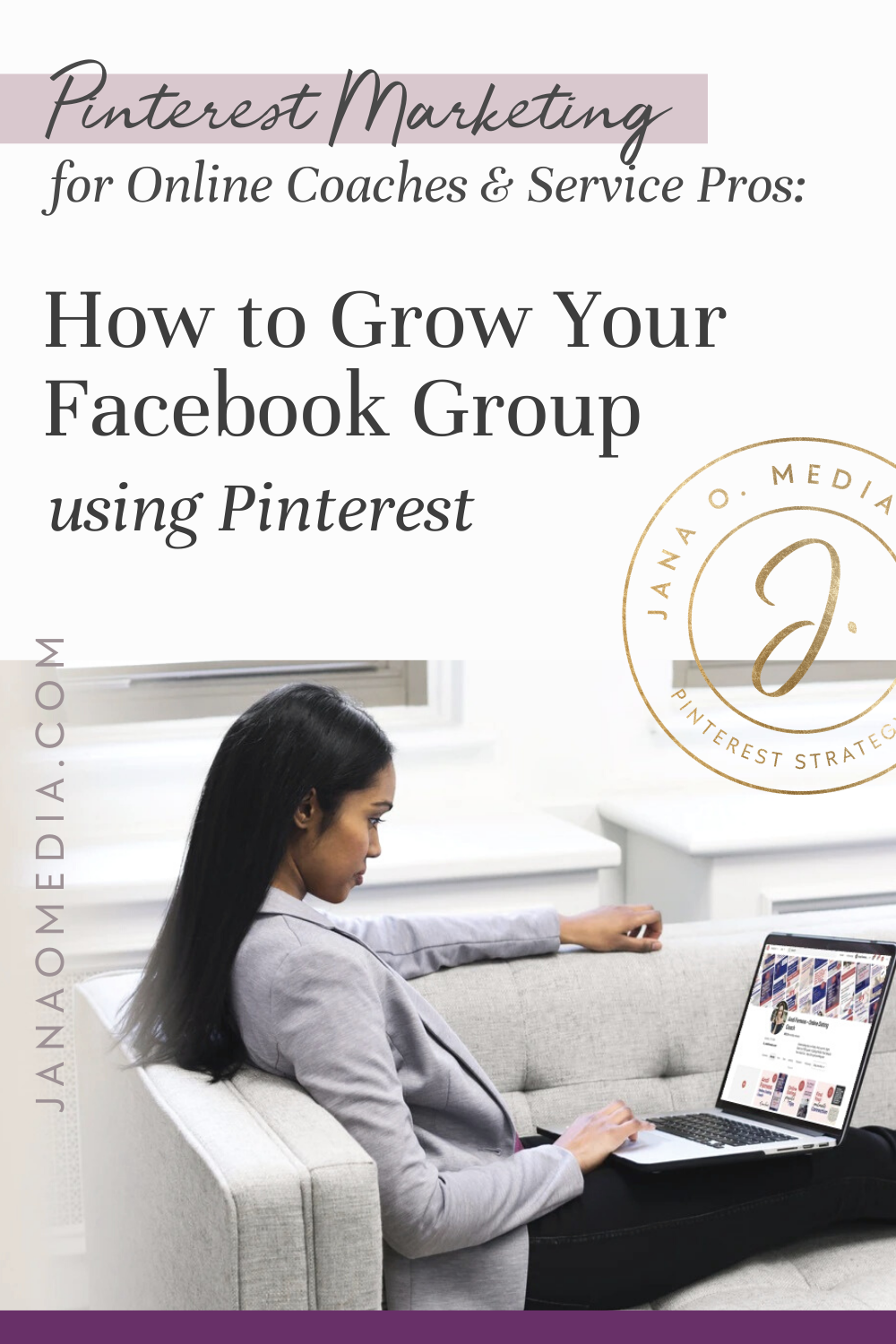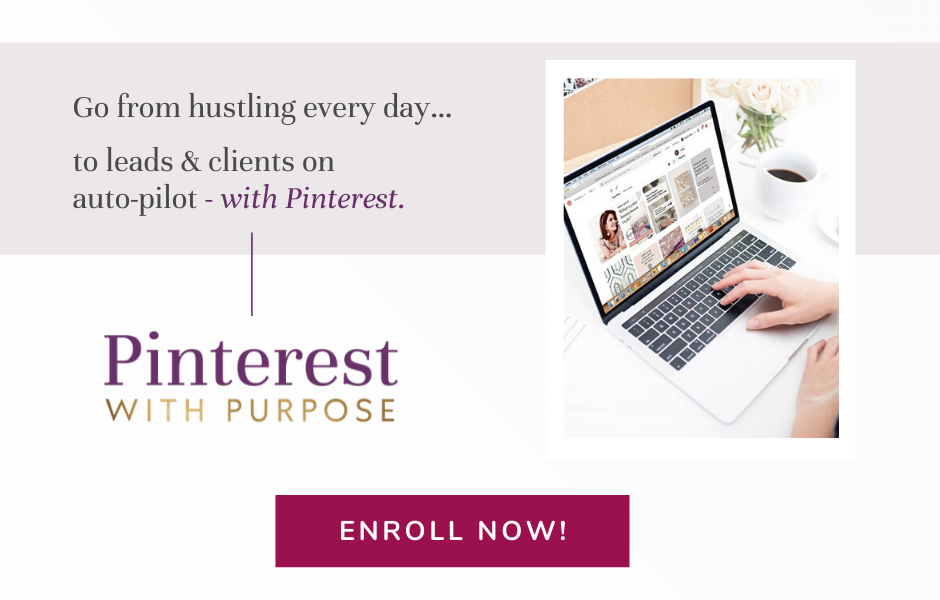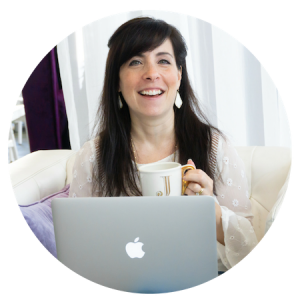One of my favorite online coaches, Barbara Iuliano of Starland Coaching, has a course in which she teaches her students how to create and run profitable Facebook groups. She wrote this recently:
“Facebook groups are one of the best forms of lead generation that I’ve found after 6+ years in [the coaching] industry. No one really talks about how much free advertisement Facebook is actually doing for you without you investing a penny!”
She continued on to describe her own results:
“I bring in anywhere from one to five FREE leads per day from my Facebook group without doing anything other than showing up and leading the group like a CEO. If I was running Facebook ads, I would have to invest anywhere from $3-$30 per day to bring in that amount of leads into my business. That is a whopping average of $5,040 per year for lead generation that you can get for free with a Facebook group that is optimized for growth and profit.”
So, yes… “Owning” a Facebook group can clearly be a treasure trove of ideal clients for women in the coaching business… and for online course creators and service providers, too!
And, guess what… you can use your Pinterest marketing strategy to grow your group!
(Wait what?)
Yes… it’s true! The strategies to do this aren’t obvious… but they are really effective when done well. And I am going to spill the tea on them right here, right now… in this post!
Ready?
Why Use Pinterest to Grow Your Facebook Group?
Pinterest is an ideal place to connect with women who would be a good fit for your Facebook group. There are two main reasons why.
1. You can get discovered by a targeted audience on Pinterest.
Because it’s a search and discovery engine, you can use keywords to target women who have certain interests – and who are seeking information about something specific. (i.e. what you help with… see where I’m going with this? 🤓 )
In contrast, when you post on social media, your messages reach a more varied audience. Some people who see your posts are interested in your thing. For others, your subject matter is not as relevant – or not relevant at all.
Let’s use my client Andi – the fantastic online dating coach – as an example…
When Andi posts something on social media, some of the women who see her post are single. Some of them are interested in finding love. But… many are not single… and some are single but not actively interested in dating right now, right?
Meanwhile, over on Pinterest…
✔️ Andi has researched and used keywords related to dating (like “dating advice” and “dating after divorce”) on her profile – in six places.
✔️ Then, when she pins her blog post entitled “How Can I Find A Quality Man Interested in Me?”… she uses relevant keywords in that pin’s description and title, too.
So, when women search for those keywords – and related terms – Pinterest’s algorithm knows to show them Andi’s pins.
The net result is that keywords connect Andi to more women for whom her content and offers are relevant. And —> the things she teaches about in her Facebook Group will also be relevant to them!
Okay, read on for reason #2 (which happens to be one of the best-kept secrets in the online business world…)
Psssst… Ready to learn more? If you’re an online coach or service provider, a great place to start is by learning my 5 Secrets for Using Pinterest to Get Clients. Enter your name and email below👇 and I’ll shoot it right over to your inbox!
2. You can continually get discovered by new audience members on Pinterest.
Let me tell you a secret… The most savvy audience builders know that COLD TRAFFIC to their content and offers is highly desirable. And that’s the second reason why growing your Facebook group using a Pinterest strategy makes a lot of sense.
On Pinterest, most women who see your pins have found them in search results, and in their smart feeds. They are NOT typically your followers already. Most of the time, they haven’t already liked your page, followed your profile, or joined your group.
(This is very much unlike on Facebook, where only your followers will see your page’s organic posts.)
So, Pinterest is a way to reach women who don’t know you yet – but have an interest in the subject matter of your content and offers. When they first discover something you’ve pinned (because the keywords you used match their interests) – these women can become cold traffic leads.
At first, the term “cold traffic” may sound like a negative. 🤨
But if you’re serious about audience growth… it’s actually AWESOME 🥰 – and totally a must.
Because “cold traffic” just means new people. And you want to be attracting new people into your audience every day. And you want to be nurturing them, too.
A Facebook group is a place where you can show up and build the like, know, and trust factors needed for people to buy. In other words, your Facebook group is one way that you nurture your leads. So, if you’re investing in your Facebook group as a nurturing strategy, then bringing new women into that group regularly is critical, too. (Feed that pipeline, Lovely!)
So… A consistent stream of new ideal client types who don’t know you yet… (cold traffic!) being exposed to your genius… all day, on auto-pilot??? Yes, please! And…
Pinterest is a system that can accomplish that for you – when it’s set up strategically.
Okay, so now that you’re seeing how Pinterest can play a role in your group growth… let’s dive into the “how” part…
(Pssssst…. You can 📌 pin this article for reference to your “Pinterest marketing” or
“Facebook Group Marketing” board:)

First, let’s talk about what doesn’t work.
I want to quickly address a common mistake that coaches, course creators, and service providers sometimes make when they set up a “Pinterest — to —> Facebook group mini-funnel.”
(Yes… I totally just said “mini-funnel”… more on that in the next section.)
The shortest distance between two points is a straight line, right?
So, it only makes logical sense that you could simply create a pin with a message like, “Join the Free Facebook Community for Moms with Vegan Families” and then point the pin to your Facebook <dot> com group “join” page…
… and then watch the new members flow in, right?
(Spoiler alert: Wrong.)
In this case, that “point A to point B” approach doesn’t typically work. I’ve had several course students and clients give this a try (it’s pretty easy to give it a whirl, so they do!)… but it doesn’t produce good results – for two reasons:
1. Pinners aren’t expecting this kind of offer.
When a woman is on Pinterest, it’s typically “me time” for her, and she’s browsing or intentionally searching for specific solutions or inspiration. That’s the nature and the culture on Pinterest.
And we love that as marketers, because women are on Pinterest with open minds They are thirsty for something new to try or do… which puts them in an action-taking mindset. (In fact, 98% of pinners reported that they have tried something that they saw on Pinterest, and 83% say they’ve bought something because they saw it on Pinterest. Source: Omnicore)
So, Pinterest is “me time” for her. And she’s not typically in the mindframe of looking for a community – or to interact with others. So, abruptly landing her on a page on Facebook (your group “join” page) is jarring. She’ll likely bounce right away.
Now, let me be clear: This does not mean that she doesn’t desire community.
It just means that, in this moment she took 30 minutes to herself. She jumped on Pinterest in between client work and starting dinner for her family… She wanted a few minutes to be alone – and to be inspired.
And, remember… She’s accustomed to finding nuggets of value on Pinterest. Whether it’s a 4-ingredient chicken recipe to try, a 5-step checklist for cleaning out her closet, or a guide to automating client onboarding… she’s looking for those digestible, actionable nuggets of value… ideas to make her life or business better.
If you give her a specific idea to try or to do… now you’ve got her attention (and hopefully, her email address, too!).
2. Pinterest probably doesn’t love sending pinners directly to other “social” platforms.
The second reason why the “point a pin to your Facebook group directly” tactic doesn’t work well is a simpler one… Pinterest probably doesn’t really “like” or want to encourage it.
While we don’t know for sure that Pinterest’s algorithm de-prioritizes pins that point to Facebook… all the evidence I’ve seen points to this.
But there is good news here, of course (or I wouldn’t be writing this article, right? 😉) … There is a better way to grow your group using Pinterest. You’ll just need to be a little more strategic about it!
Okay, now here’s what does work to grow your Facebook Group using Pinterest.
So, you know that Pinterest can work to get you discovered – virtually on auto-pilot – by women who are already searching for what you offer… Ahhh-mazing!
But how do you bridge the gap and get them from where they are (Pinterest) to where you want them (your Facebook group)? What does work to get those primed-to-buy, highly-interested women into your group – where you’ll be able to nurture them with all the value you provide in there?
You need a strategy that both takes into account the mindset of the pinner… and also invites her (when the timing is right) to join your group.
Here are two different “mini-funnels” that you can put into place to do this. (*Note: These are not the only possible paths… but they are two that I’ve seen work really well!)
Mini-funnel 1: Pinterest pin >> Free offer >> Email list >> Invitations to join group.

In this scenario, your pin promotes a free offer. This is an “easy yes,” no-brainer kind of lead magnet – one that she simply can’t say no to.*
*(Psssst… How to create an irresistible freebie? Well that’s another topic altogether! Typically the best practices include carving out a small piece of the bigger solution you offer… telling her “what and why” but not “how” yet… giving her a quick win so she wants more…
But, for this strategy to work, the number one priority is to make your freebie something she really, really, reeeaaaallly wants… So be sure you’re answering a burning question that you’re always asked about – or providing something so good that she just can’t click away!)
Then, in the automated emails that you send to her after she opts in, you prioritize extending invitations to join your group.
✔️ Maybe in the first email (after you deliver the freebie), you make your invite prominent.
✔️ Then, in subsequent emails in your welcome series, you can add that invitation to your “PS.”
✔️ You can get creative here… maybe have automated emails in that series that include screenshots of valuable interactions that happened inside your group.
✔️ (Bonus tip: When you plan to go live in your group with a hot training, you can email your list, too. This helps get your audience to join you… but it also helps gather up stragglers that are on your email list but haven’t joined your group yet.)
The key to this is that these follow up emails “sell” the value of your free group.
What will she get or learn if she joins? Make it clear what’s “in it for her” – because there are lots of Facebook groups out there. You want to “sell” yours – even though it’s free.
Mini-funnel 2: Pinterest pin >> Blog post with value >> Logical, aligned call to action to join your group.

In this second model, your pin points to a blog post. Similarly to the first model, it’s important that the pin itself previews the content and positions it as irresistible. (I teach lots of hacks for your pin’s “messaging” in my course, Pinterest with Purpose.)
When she lands on your “gotta read that” blog post, that post is designed to do two things:
1) Provide some incredible free value. This serves to:
- Position you as an authority and a resource
- Demonstrate the benefits of spending time in your sphere and learning from you
- Whet her appetite for more access to you
2) Extend an offer to take this specific piece of value even deeper by joining your Facebook group.
In this model, there are a couple of things to be really intentional about:
- Draw a direct connection between this value you are providing in this blog post – and membership in the group. (Don’t position the group join invite as an “by the way…” – make it the focus.)
- The call to action of the blog post is to join your group. So, don’t complicate things and offer too many choices for next steps… simply demonstrate how joining your group and participating there will benefit her – and help take this new information you’ve provided to the next step.
Here are a few content ideas – to bring this to life for you and get your creative juices flowing:
✔️ You could write a blog post that mirrors the content of one of your best Facebook Live videos from your group. Embed the actual Live video about a third of the way down. Add two CTAs to join the group – one near the video, and one at the end of the blog post. (Remember, sell it! She needs a reason to join!)
✔️ You can weave stories and wins from group members into your blog post content. (Obviously, use good judgement here. Get permission and/or change details to preserve confidentiality – especially if your group is private and/or centers around sensitive topics.)
If appropriate, you can even screenshot parts of interactions into the post for social proof.
✔️ You can also ask readers to join the group to provide you with feedback on the post… to report what they experienced when they tried the thing you’re suggesting… or (and this is really powerful —>) to get customized feedback from you.
(*A quick example: I follow a messaging strategist and coach who often calls blog readers to action to post in her group and tag her. Then, once a week, she jumps in and provides personalized feedback on their “practice my pitch” posts. So, she’s incentivizing them to join her group by offering access to her. And they get a chance to workshop what they’ve learned! … Brilliant!)
So, in summary… make an offer to join your group, and make that pitch very well aligned – a natural segue or next step.
Lastly, I want to cover one more thing… and it’s KEY🔑 to the success of this strategy…
How can your get your content, offers, and Facebook group found – by the right women – on Pinterest?
All of the above strategy hinges on the very first step in the process… the one I wrote about waaaayyyyy up at the top of this mega-post.
Finding the right keywords – and then optimizing your
Pinterest profile with them – has to come first.
(Because, if you skip the keyword research and optimization, you’ll end up with a Pinterest profile that is pretty, but not strategic and then… well… Womp womp. None of it works. 😉 )
Ready to use Pinterest to get clients for your business?
Are you an online coach or service provider? And you want to learn how to set up a Pinterest account that will grow your audience and attract clients — on autopilot?
If so, then my course Pinterest with a Purpose was created for you!
It’s a self-study e-course that walks you through *every step* of setting up your strategy and your account. It reveals the methods I perfected over YEARS doing strategic Pinterest set-ups for clients!



